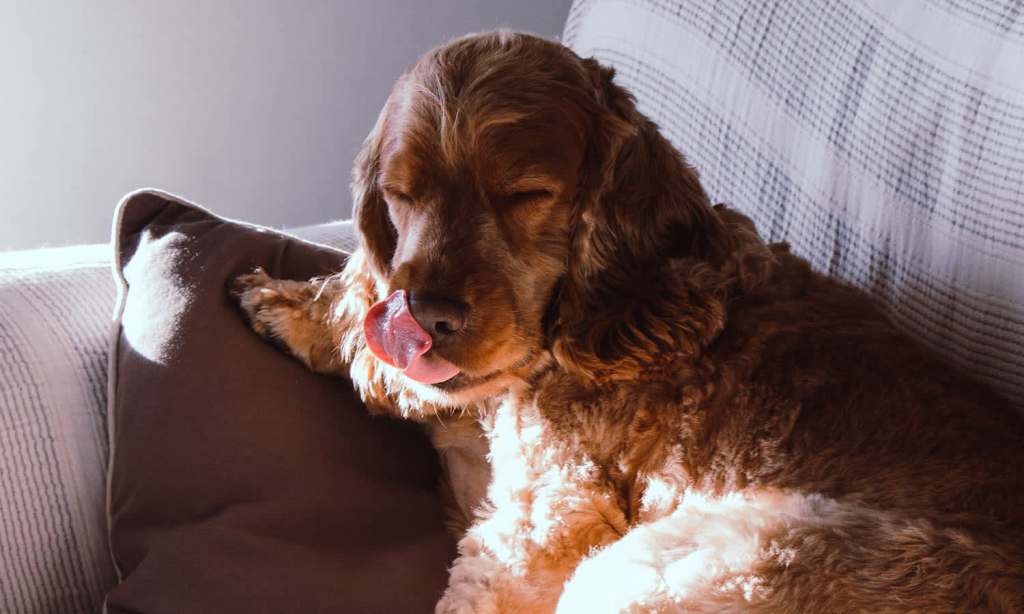Undoubtedly one of the best parts of staying home in isolation has been spending so much extra time with our pets. That, and having an endless supply of snacks. And wearing track pants to work (if you even got dressed at all).
Our pets have loved having us around more, too. Data from the ABS shows we’ve been spending up to 32% more time with our pets in isolation — one dachshund named Rolo even sprained his tail from excessive wagging; he was that excited to have his humans home.
But soon enough, we’ll all have to return to working in an office. Which sadly means leaving our pooches to guard our homes solo once more. It’s a heartbreaking thought, honestly, and it’s likely our furry friends could feel separation anxiety when we head off for work after such a long time by their sides.
There are a few simple ways you can help the transition along smoothly. And according to PETstock Vet Dr Sasha Nefedova, the training should start now.
Monitor for symptoms of anxiety
“For any animal that already suffers from anxiety, the transition will be difficult. Even for dogs that have not shown any pre-existing signs of anxiety, being with their pet parent for every hour of the day to suddenly only mornings and nights is likely to take an emotional toll on your pet,” says Nefedova.
Look out for signs like trembling, frequent licking, pacing, increased salivation, shivering or a lack of appetite.
Introduce alone time
Instead of one day heading off to work and leaving your pet alone for a long period of time, try and introduce the concept early, and gradually. Nefedova says allocated alone time can establish and sense of safe familiarity.
“While working at home, it is recommended that you physically distance yourself from your pet for at least an hour twice a day.”
Pop your dog or cat in a quiet room away from you and your desk, or the backyard, to help them get used to your sudden absence.
Go for walkies
You may have shifted the daily walking to a lunchtime hour to make the most of the weather, but Nefedova advises you keep the walk to the morning or evening.
“Ensure you’re taking your dog out for a walk before or after each workday. Keeping walks to before or after work will help establish a routine that they are familiar with when you return to your workplace, rather than expecting a walk at lunchtime,” she says.
What’s more, exercising together will help improve the bond between you, plus calm their nerves and reduce anxiety.
Give them something to play with
It can be difficult for your pet to go from having so much stimulation to an empty backyard. Before heading off to work, invest in some quality toys that will provide them with hours of entertainment.
“Enrichment toys such as Kong’s or food puzzles will keep your dog, cat or rabbit busy for hours and offer a sense of comfort. Giving your dog a ‘job’ to do will keep them mentally stimulated and help manage their anxiety or boredom,” Nefedova says.
While it’s important to investigate the root cause of your pet’s anxiety (if you find they are experiencing symptoms), these toys, plus garments like weighted ‘anti-anxiety’ coats can be helpful while you’re not around.
Play music
Music, particularly classical varieties, have been found calm pets. Background tunes can make for an effective distraction to help soothe them into sleep, and could help reassure them while you’re no longer in the room.
“While you are still working at home, it’s the perfect time to test this method so that you can monitor their reaction closely. If they sleep and don’t present any signs of feeling anxious, then leave some music playing throughout the day when you make the transition back to your workplace.”
—
If you find your pet is experiencing symptoms of anxiety after your return to work, then consult your trusted vet or call 13 PETS.







